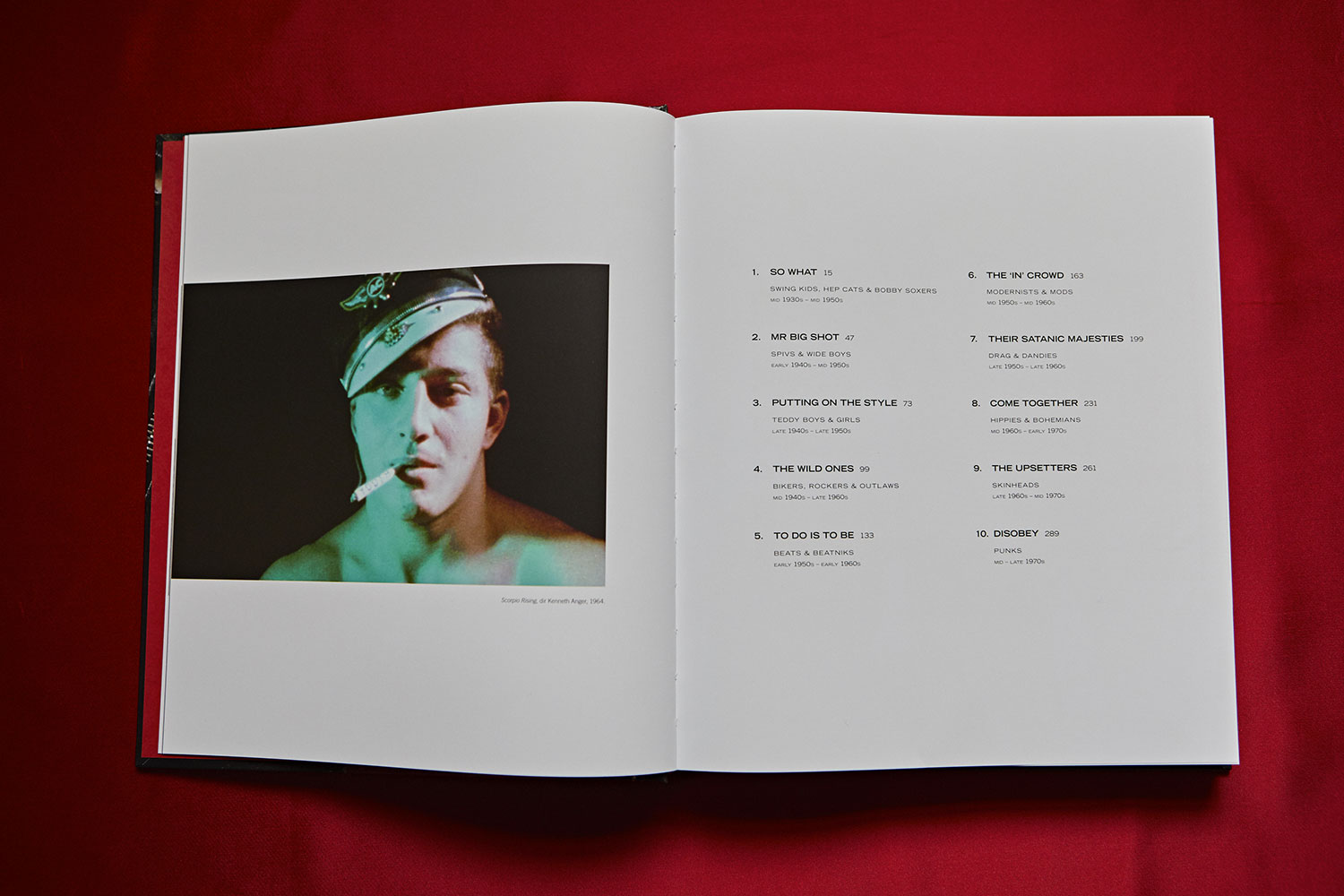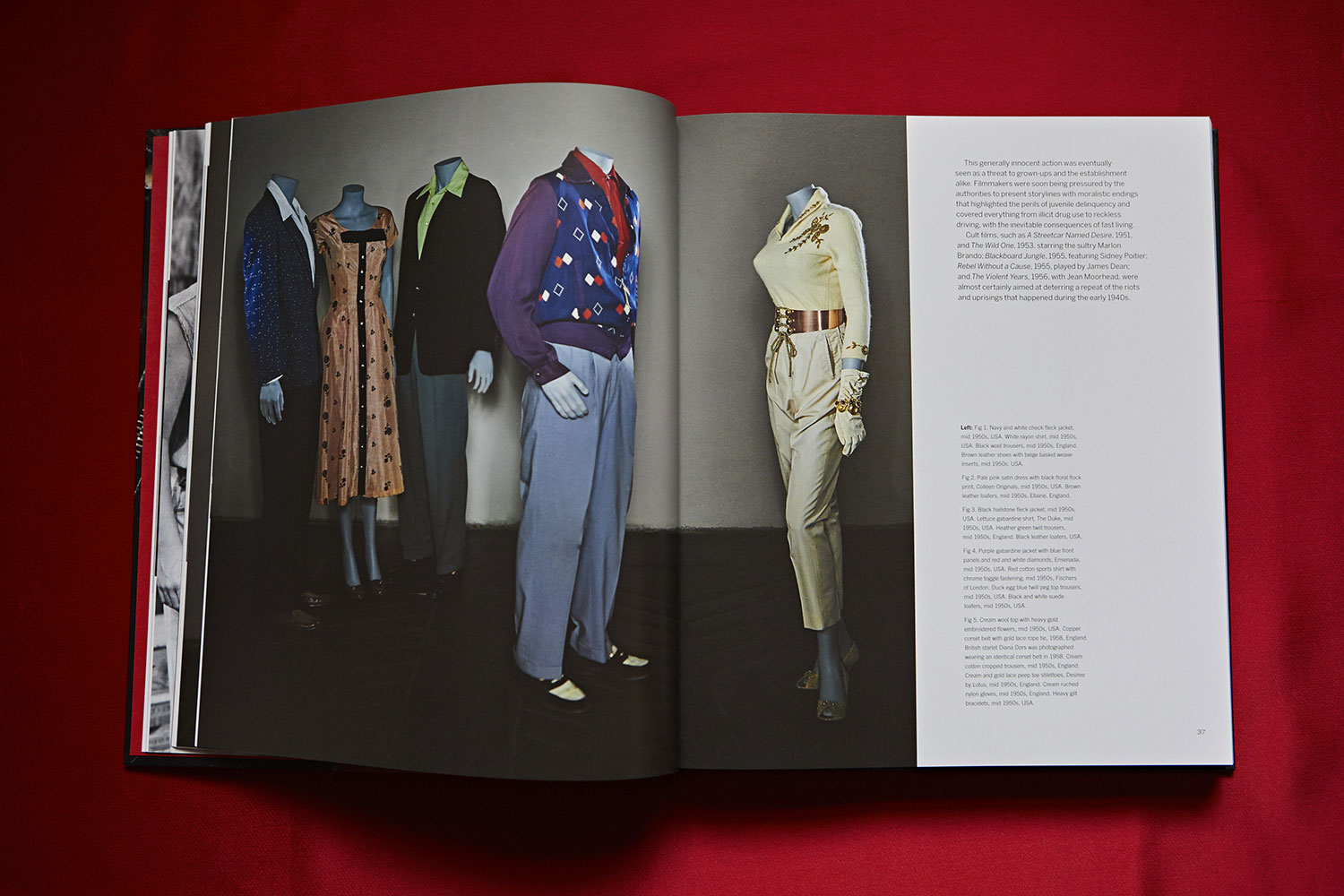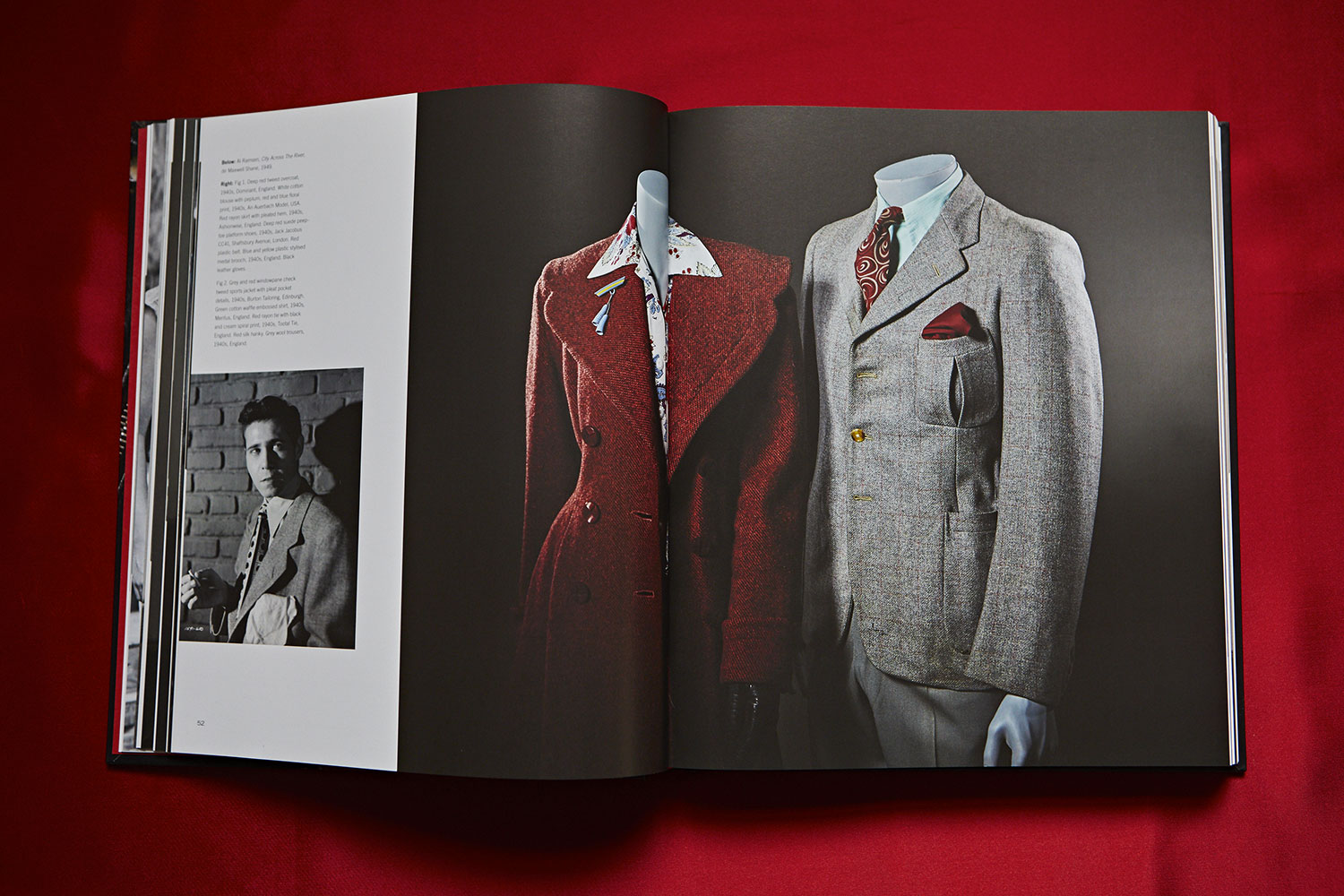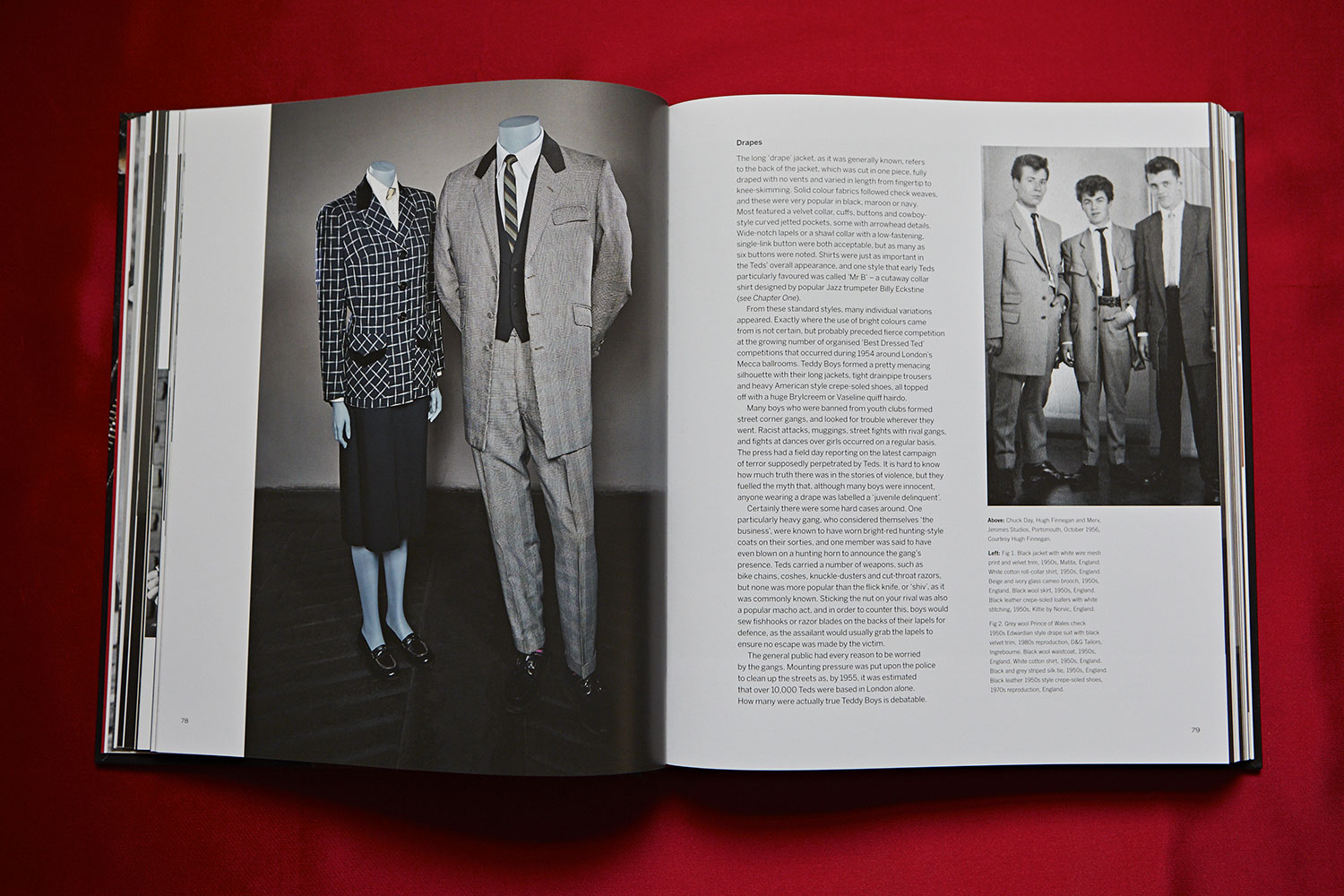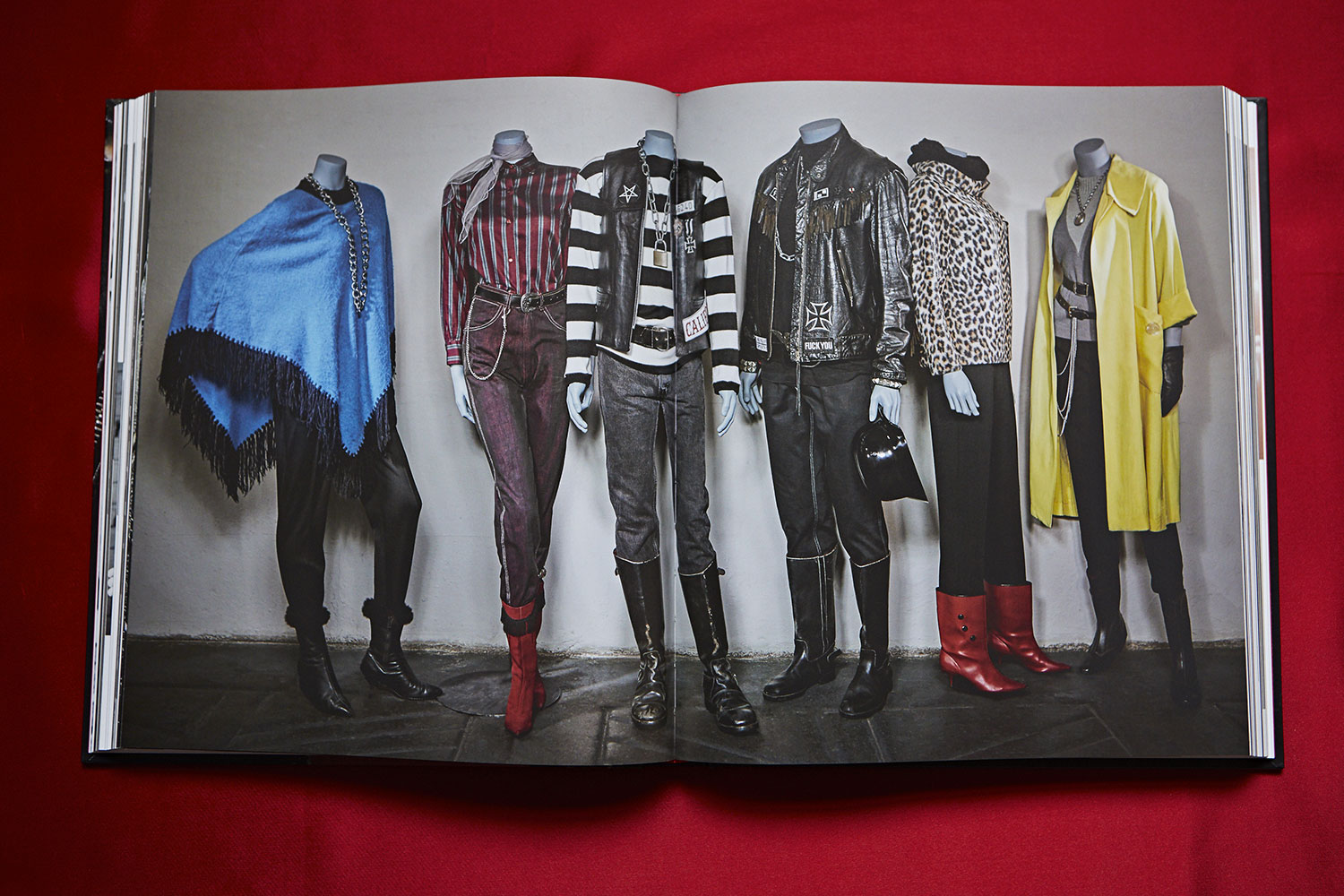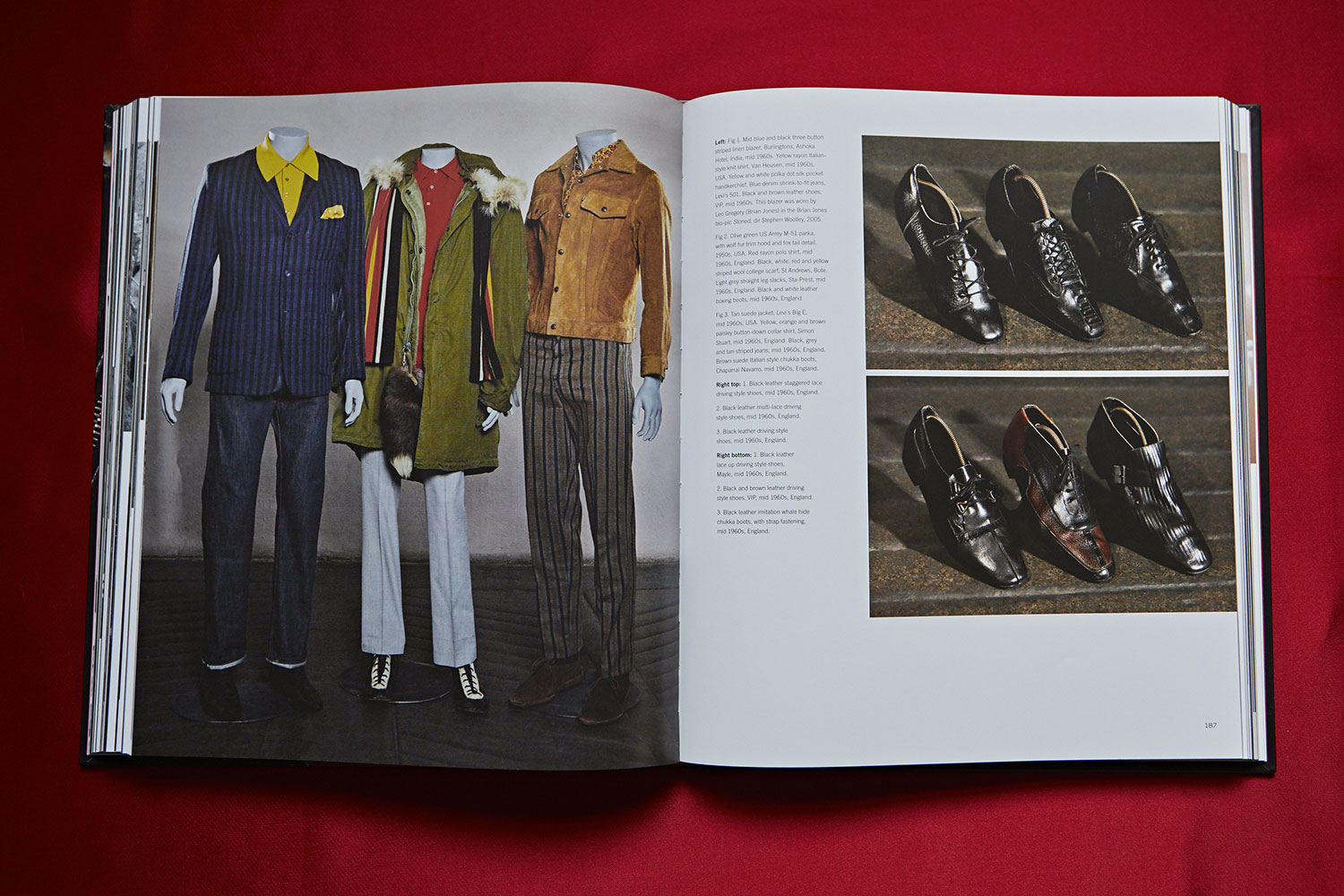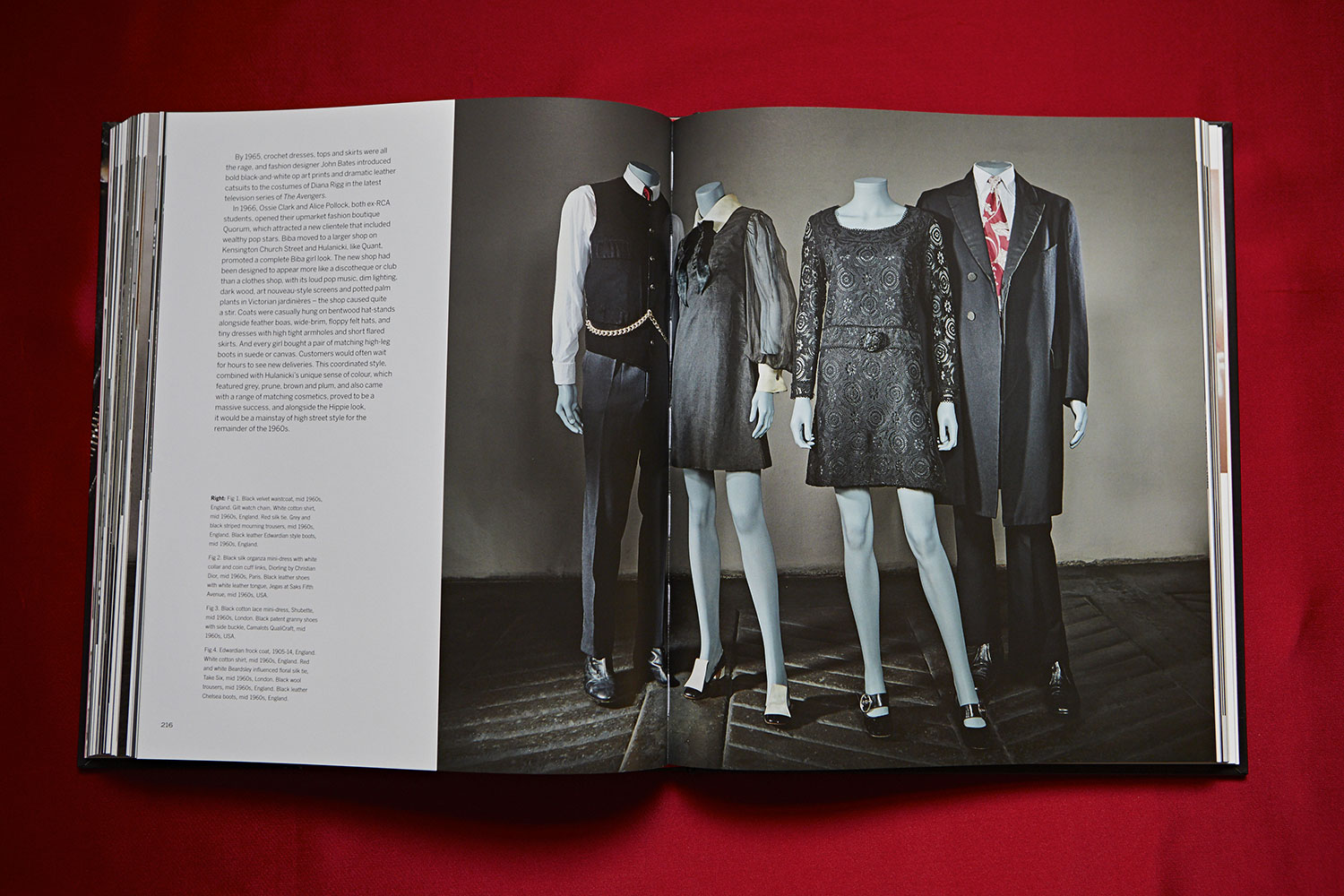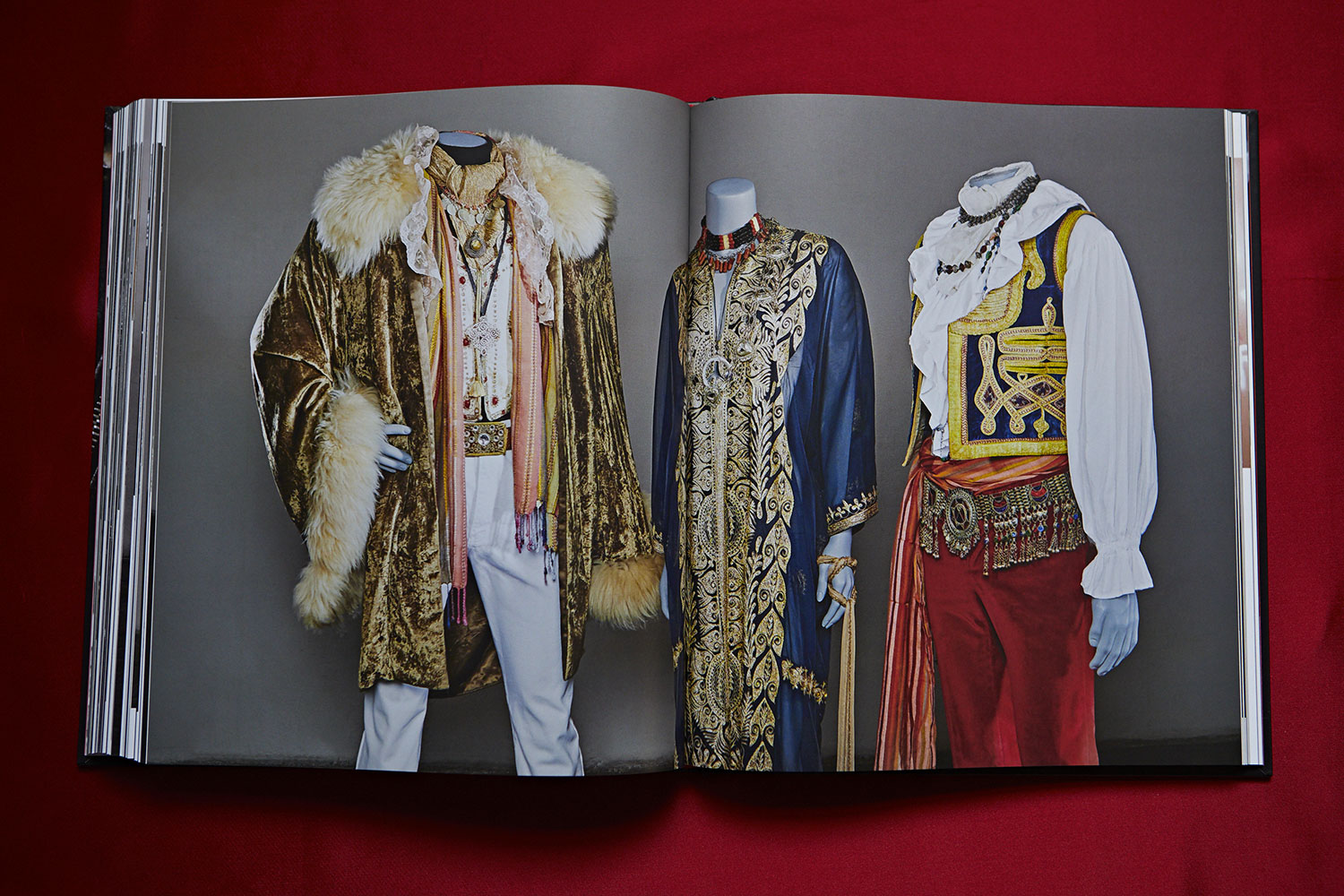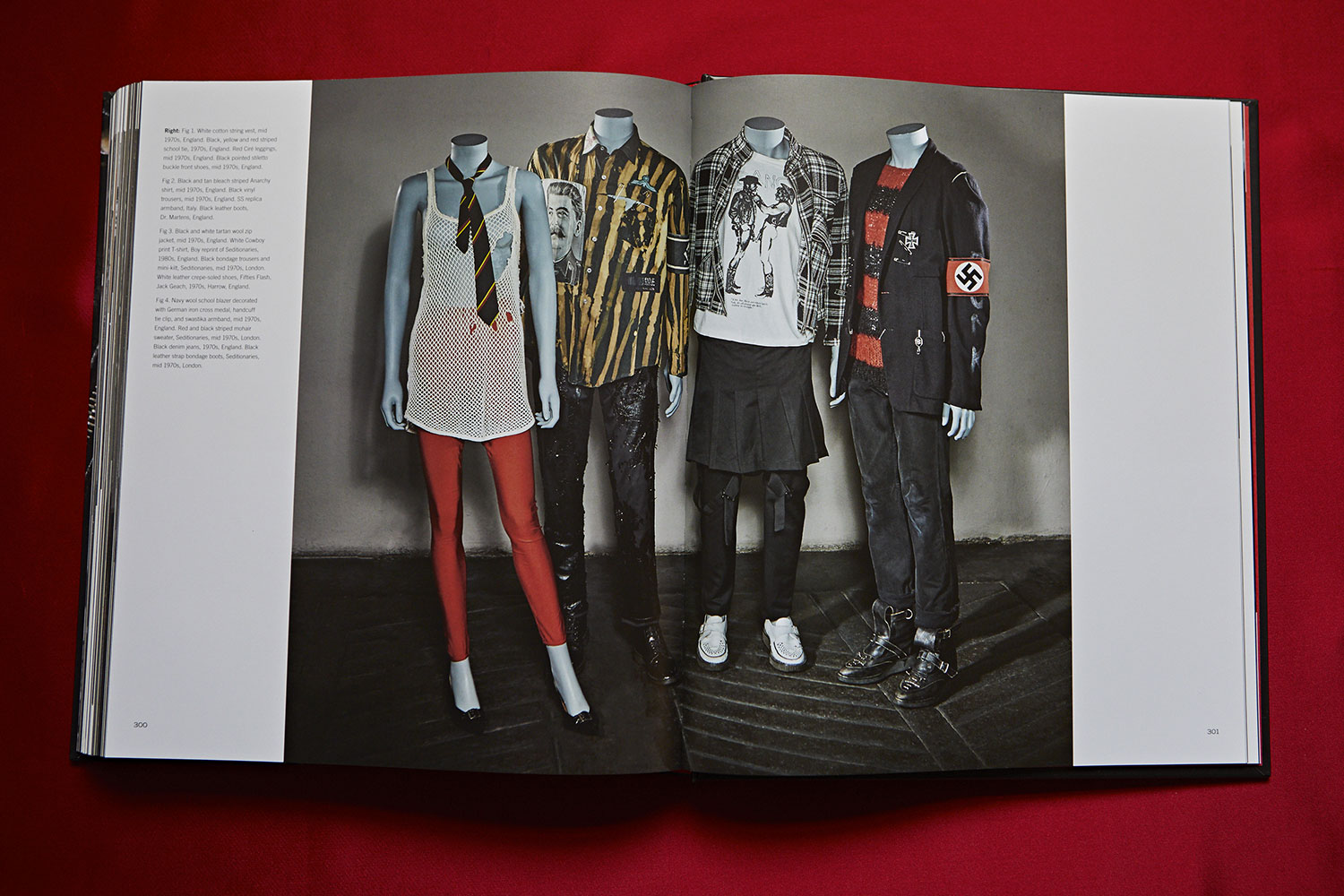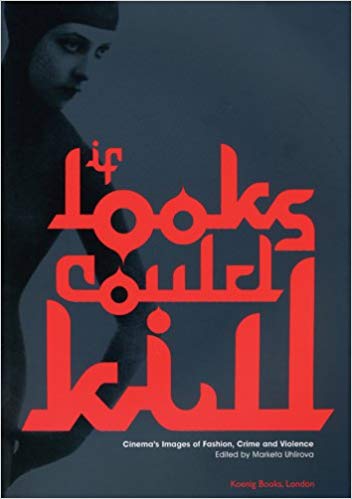Publications
This impressive showcase features over 1300 examples of rare vintage clothing from the swing, counterculture and blank generation eras, detailed photographs and factual stories of the clothes origins, alongside many previously unseen fashion and film stills. The book traces how these distinct street punk styles were originally put together and worn by the predominant teenage sub-cultures that emerged between 1940–1980, and set these kids apart from mainstream fashion.
““Roger is the infinite collector and master curator of this living and wearable history””
With 50 years’ experience collecting vintage street fashion, costume designer, stylist and former mod, the author, supplied original mod clothing for the 1978 cult film Quadrophenia, before establishing the Contemporary Wardrobe Collection, to provide street fashion for TV and Film. He went on to dress literally hundreds of influential bands, from David Bowie to the Rolling Stones. The archive now exceeds some 20 thousand items and serves as a valuable resource for leading fashion and film stylists, designers and important museums around the world.
Rebel Threads is prerequisite for all lovers of vintage clothing, collectors, fashion students, designers, costumiers and anyone fascinated by the history of street style.
for more information please visit
IF LOOKS COULD KILL: CINEMA’S IMAGES OF FASHION, CRIME AND VIOLENCE
Edited by Marketa Uhlirova
From stolen pearls to a glove left at the scene of the crime, an excess of red lipstick or the postmodern gangster silhouette, If Looks Could Kill explores the compelling links between cinema, fashion, crime and violence. Tackling themes such as disguise, the expression of desire, juvenile delinquency and the corruption of beauty, this volume features a string of underworld characters (and their prosecutors) whose highly effective styling and sartorial gestures helped define cinematic genres from detective to thriller, gangster, film noir and horror.
Edited by Marketa Uhlirova, Co-founder, Director and Curator of London’s Fashion in Film Festival, If Looks Could Kill features an extensive line-up of new essays on fashion and crime in cinema by acclaimed writers including Tom Gunning, Elizabeth Wilson, Caroline Evans, Roger K. Burton and Charlie T. Porter.
available at
ESSAY BY ROGER K. BURTON: LOVING THE ALIEN
from Fashion in Film Festival: Between Stigma and Enigma
Roger K. Burton
Movies about “aliens”, beings from other worlds, are generally seen as good box office. Here, in complete reversal, this programme looks at the work of four quite diverse directors who dared to turn the camera on that sub-species of “fashion aliens” who exist within our own society.
Covering everything from high glamour to lowlife, and cult to couture, each film integrates into its storyline a completely different fashion strand of its day, whilst also clearly illustrating in retrospect how fashion in its extreme still sits uncomfortably in the real world.
Of the four films featured in this programme only Liquid Sky is pure science fiction, while the other three, Paris is Burning, The Wild Wild World of Jayne Mansfield and True Stories, subtly explore worlds that could easily verge into the realms of science fiction. All four could also be categorised as parody, with each in its way setting about seducing the viewer into considering the unacceptable and maybe even believing the unbelievable.
These observations are most clearly depicted in True Stories (1986), a work of pure fiction yet firmly based in reality. Here, director David Byrne of Talking Heads fame, personally escorts us into the heartland of contemporary “Middle American” mall life, in the mythical Texas town of Virgil. Renowned for his deep love of irony, Byrne paints a picture of an idealistic, familiar place, where everyone conforms to regular society, but displays their own unique brand of individuality.
The movie – which in many ways is like a musical – has no real plot, but rather meanders through the streets of Virgil exploring the lives of the townsfolk as they prepare to celebrate “150 Years of Specialness.” Along the way we meet the main character, shy bachelor Lewis Fyne played by John Goodman, and we follow his hysterical exploits as he goes in search of a wife. Ever fashion conscious, in his extensive range of co-coordinated polyester suits and caps, Lewis places an advert on TV and confesses that he just wants to be loved, but applicants must be prepared to accept his teddy-bear figure!
As the camera travels along the vast aisles of Vigil’s shopping mall, we quickly get the impression that to be fashionable is very important here; it makes a statement about who we are and where we belong. Although by today’s standards the styles we see in the film appear very dated, the costume designer – Byrne’s wife – has carefully selected marvellous examples of fashionable leisurewear from previous decades to throw into the mix, giving the movie a somewhat timeless look. She has not styled her costumes on the wearer as some latest designer fad, in an ephemeral manner. Instead we get the impression they have evolved steadily over the years in a considered, acceptable way, like much mainstream American fashion.
However, we soon learn what differentiates this place from any other stereotypical US community; this town’s inhabitants, although playing familiar roles, such as civic leaders, factory workers and shoppers, are a little strange. Many, like the 50 sets of twins, a lawnmower brigade and a chapter of Shriners, driving their miniature Corvettes, are quite eccentric. Some, such as the woman who stays in bed all day watching TV surrounded by automated contraptions, and the “lying woman”, who among other things claims to have written the lyrics for Michael Jackson’s “Billie Jean”, appear so disturbed they could even be aliens.
Here, True Stories raises the question: ‘Is truth stranger than fiction?” It certainly could be the case in this part of America, and Byrne deliberately sets about testing our preconceptions of its society. Do these kinds of people really exist? Anyone who has spent time in the Midwest may testify that characters of this extremity are pretty prevalent in those parts. But what is unusual about this movie is that Byrne magnifies his character observations to the point of obsession, allowing nothing to be hidden; everyone’s personal traits and eccentricities are examined and celebrated, in effect giving star treatment to the entire cast. “When I see a place for the first time, I notice everything – the color of the paper, the sky, the way people walk, doorknobs, every detail,” says Byrne. Similarly, with the clothes, the camera often lingers so long on the acres of polyester that one can almost feel the static.
This bizarre scenario and vision of over-indulgence leaves the viewer sensing a slight air of unease, in much the same way as the films of David Lynch. But it’s ok, because Byrne counter-balances the weirdness by playing up the humour with familiar feel-good themes, and before we know it, another comforting wave of self-assurance washes over us, persuading even the sceptics to smile through it all. So, when a surreal “family catalogue style” fashion show is thrown into the mix, we are well primed to accept that the mall audience, rather than be embarrassed, would happily go out and wear these outrageous creations. Throughout True Stories Byrne subtly delivers the point that people really want to “fit in” to this kind of community, and this is reaffirmed when Lewis, bursts into the song, “People Like Us”.
Like True Stories, with The Wild, Wild World of Jayne Mansfield (1968) a documentary, we have a highly visible celebrity guide and host. Mansfield, complete with her pet Chihuahua, personally introduces us to a darker, generally hidden side of humanity, taking us on a fantastical journey deep into the underbelly of the American and European sex trade. And, in a similar way to David Byrne in mall world, she appears totally at ease mingling with these various low-life communities.
One minute we are observing attractive young prostitutes of both sexes, practising openly on the streets of European cities – attracting their salubrious clientele by wearing the latest chic styles usually reserved for the fashion set – and the next, she takes us behind the closed doors of assorted sex parlours where a seedy glamorous dress style is the norm. Then, like True Stories, we are witness to a surreal fashion show, this time with the designer’s bizarre creations displayed by semi-naked girls – one featured girl wears a tent complete with camping equipment and all its trappings, while another who is made up to resemble an oil painting, sports little more than a large gilt frame. Within the context of this environment, the costumes seem completely acceptable and well received by the audience. But, one questions, would anybody dare to wear such incredible garments outside of these four walls?
Also based in the underworld but some 14 years later on, Paris is Burning (1982) director Jennie Livingstone documents an infamous ensemble of African-American and Hispanic young men, who live out their high fashion female fantasies and obsessions by mimicking catwalk supermodels. These highly competitive rituals are carried out on the dance floor of Brooklyn nightclubs. Adopting the names of famous Parisian couture houses, these exotic creatures wear their own ostentatious creations mixed with bootleg fashions, and have created their own unique dance style called “voguing”. Here again these spectacles are carried on in virtual exclusivity behind closed doors, far away from the prying eyes of the general public. One is left with the feeling that these young men are somehow victims of a blinkered society that excludes fashions that challenge and differentiate from the norm. It is therefore somewhat ironic that it took the female pop icon Madonna to later appropriate and popularize “voguing” as an acceptable genre.
With the cult feature film Liquid Sky (1982), we are presented with the only work that truly falls into the science fiction genre, so it is immediately labelled as make-believe. However, what director Slava Tsukerman has cleverly done here, is lend plausibility to his fictitious characters by basing their stylish futuristic outfits on a genuine fashion – labelled “New Wave” – that was prevalent in the New York underground scene at the time of making the film. He goes further with the film’s storyline, by featuring a crowd of genuine Lower East Side fashionistas and exhibitionists in a nightclub and a spectacular fashion show, whilst also capturing the elitist mood, drug preferences, and sexual activities of that same hedonist scene.
As a genre, movies with contemporary fashion themes are virtually untouched by today’s filmmakers, and as with this selection, generally left to the low-budget independents. It takes a rare breed of producer to bankroll a movie that ventures into this territory, unless the subject is used as pastiche. Film moguls now demand shelf life for their product and not something that will be dated even before its release.
Interestingly, when the films in this programme came out, each in its own way was quite influential in the fashion world, though none, in movie terms, were a financial success. However, what they did achieve was surely something every director secretly strives for – instant cult status – and thereby, ironically, an everlasting shelf life. Sadly, cult status can sometimes be the kiss of death, as none of these clearly talented directors have done anything as adventurous since!
© Roger K Burton 2006



